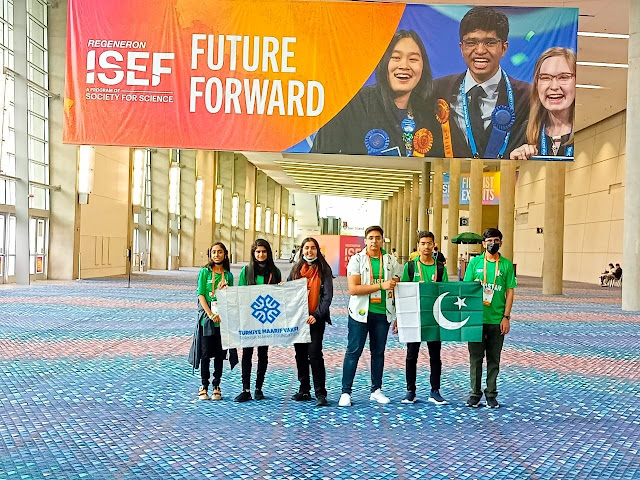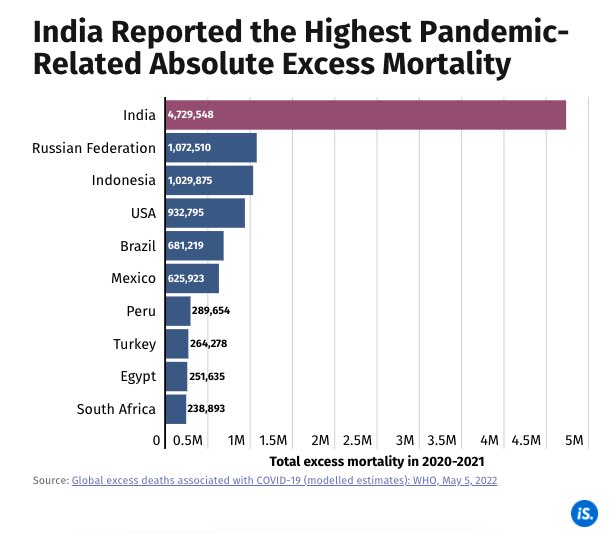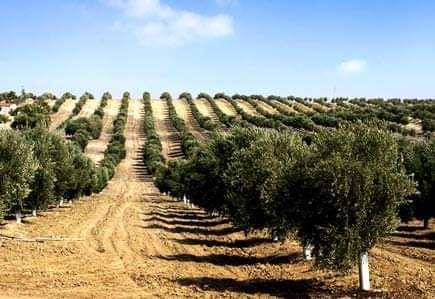Pakistan's chief central banker Dr. Reza Baqir's 3-year term saw a broad expansion and modernization of the nation's financial services industry. The impact of Baqir's policies can be seen in multiple sectors including agriculture, housing, manufacturing, exports, financial digitization and record-high investments in technology startups. Supported by Dr. Baqir's accommodative monetary policy during the COVID19 pandemic, Pakistan poverty headcount, as measured at the lower-middle-income class line of US$3.20 PPP 2011 per day, declined from 37% in FY2020 to 34% in FY2021, according to the World Bank's Pakistan Development Update 2022 released this month. The report said Pakistan's real GDP shrank by 1% in FY20, followed by 5.6% growth in FY21. Pakistan’s economy created 5.5 million jobs during the past three years –on an average 1.84 million jobs a year, which is far higher than yearly average of creation of new jobs during the 2008-18 decade, according to the Labor Force Survey (LFS) published by the Pakistan Bureau of Statistics (PBS).
State Bank of Pakistan's TERF (Temporary Economic Refinance Facility) helped drive double-digit growth in large scale manufacturing (LSM) and its RDA (Roshan Digital Accounts) simplified overseas Pakistanis' investment and boosted the nation's foreign exchange reserves.
Under Dr. Reza Baqir's leadership, the SBP supported the Rozgar Scheme, Loan Extension and Restructuring Package, and RFCC (Refinance Facility to Counter Covid) to deal with the economic impact of the COVID pandemic. To promote digital payments, the SBP waived all charges for customers using online fund transfer services. Further, to ease on-boarding of new customers to use online banking channels, the SBP waived the requirement of biometric verification to activate internet and mobile banking accounts.
World Bank Pakistan Update 2022:
A World Bank report released in April 2022 credited the PTI government led by former Prime Minister Imran Khan for timely policy measures, particularly the Ehsaas program, for mitigating the adverse socioeconomic impacts of the COVID-19 pandemic. Here's an excerpt of the report titled Pakistan Development Update 2022:
"The State Bank of Pakistan (SBP) lowered the policy rate and announced supportive measures for the financial sector to help businesses and the Government expanded the national cash transfer program (Ehsaas) on an emergency basis. These measures contributed to economic growth rebounding to 5.6 percent in FY21. However, long-standing structural weaknesses of the economy, particularly consumption-led growth, low private investment rates, and weak exports have constrained productivity growth and pose risks to a sustained recovery. Aggregate demand pressures have built up, in part due to previously accommodative fiscal and monetary policies, contributing to double-digit inflation and a sharp rise in the import bill with record-high trade deficits in H1 FY22 (Jul–Dec 2021). These have diminished the real purchasing power of households and weighed on the exchange rate and the country’s limited external buffers."
Digital Banking:
Digital transactions in Pakistan soared 31.1% to Rs. 88 trillion or $500 Billion in fiscal year 2020-21, according to the nation's top central banker. “If the figure is $500 billion now, you can imagine the pace at which we are digitizing,” said Dr. Baqir Raza, Governor of the State Bank of Pakistan, adding that those transactions showed a year-on-year growth of 30.6% in volume and 31.1% in value. The nation's central bank also reported that the large-value payments segment, known as Real-time Inter-Bank Settlement Mechanism (PRISM), saw growth of 60% by volume and 12.8% by value to Rs. 444.6 trillion or $2.5 trillion in FY 2020-21. There are several factors driving rapid shift to digital technology, including expanding digital infrastructure, new technologies and the government's efforts to document Pakistan's huge undocumented economy. Grey-listing of Pakistan by the Financial Action Task Force (FATF) has also played a role.
Digital Transactions Growth:
Growth in digital transactions was led by major uptake in mobile banking (29% increase in the number of users and 133.6% and 178.7% hike in volume and value, respectively) and internet banking (32% increase in the number of users and 65.1% and 91.7% up in volume and value, respectively), according to the State Bank of Pakistan. “If the figure is $500 billion now, you can imagine the pace at which we are digitizing,” said Dr. Baqir Raza, the head of Pakistan's central bank.“Therefore, there is a huge potential for enhancing financial inclusion,” he added.
Pakistan's central bankers have taken the plunge into the world of digital payments with their own offering: Raast. It aims to create an instant low-cost payment system that can seamlessly and securely connect government entities, a variety of banks, including microfinance banks (MFBs), electronic money institutions (EMIs) and State Bank authorized payment service providers (PSPs) like 1Link and NIFT which may choose to take advantage of it. Currency and coins in circulation account for about 43% of Pakistan's total money supply. The introduction of Raast is part of the government's effort to modernize and document the nation's cash-based informal economy. Undocumented economy poses a serious threat to the country because it creates opportunities for criminal activities and tax evasion. Digital financial services will also promote e-commerce in Pakistan.
Raast Digital Payments:
Raast is a system of digital payment infrastructure. It is essentially a pipe that is intended to connect government and financial institutions with consumers and merchants with each other to process payments instantly at very low cost.
Raast will be boosted by Pakistan government's decision to use it to pay salaries, pensions and pay welfare recipients under Benazir Income Support and Ehsaas Emergency Cash programs.
It has been developed in-house by the
State Bank of Pakistan in collaboration with Karandaaz, Bill & Melinda Gates Foundation and supported by the World Bank, the British government and the United Nations.
Private Payment Apps:
Several private payment apps, including EasyPaisa and JazzCash, are already operating in Pakistan. These apps lack interoperability with each other. Each operates in its own silo. Neither of these offer links to financial institutions and government entities.
There are also several EMIs (Electronic Money institutions) in Pakistan. These include NayaPay, SadaPay and Finja. EMIs are not banks, but can store deposits. These are not tied to any banks or telcos. They could all use back-end plumbing offered by Raast.
Payment Service Providers (PSPs) :
1Link and NIFT payment and switch networks, supported by different groups of Pakistani financial institutions, currently process the bulk of credit/debit card and ATM transactions as well as e-payments in Pakistan. State Bank's Raast promises to be cheaper and faster than these networks. Raast also offers processing of e-payments by government entities.
Raast Future Roadmap:
State Bank of Pakistan intends to demonstrate Raast's usefulness by first processing government payments to individuals, including government employees and Ehsaas welfare beneficiaries, before expanding it for business applications. SBP’s plan is to start person-to-person (P2P) payments using just the phone numbers in Q3/2021 and then bring merchants on board with QR codes by Q1/2022.
Summary:
Dr. Reza Baqir's 3 years as Pakistan's top central banker saw a broad expansion and modernization of the nation's financial services industry. The impact of Dr. Baqir's policies can been seen in multiple sectors including agriculture, housing, digitization and record-high investments in technology startups. Digital transactions in Pakistan soared 31% to $500 billion in FY 2020-21. Among the factors driving rapid shift to digital technology are: expanding digital infrastructure, new technologies and the government's efforts to document Pakistan's huge undocumented economy. Grey-listing of Pakistan by the Financial Action Task Force (FATF) has also played a role. The State Bank of Pakistan's launch of Raast digital payment infrastructure represents a great leap forward for the use of financial technology (
FinTech) and financial inclusion in the country. It will also promote
e-commerce in Pakistan.
Undocumented economy poses a serious threat to the country because it creates opportunities for criminal activities and tax evasion.
Raast is part of the government's effort to modernize payment systems and document the nation's cash-based informal economy.
Speaking with CNN"s Julia Chatterly, the State Bank of Pakistan Governor Reza Baqar said last year that the Pakistani government is currently studying the idea of issuing central bank digital currency (CBDC). China is showing Pakistan the way with its CBDC. There will be an announcement on the country's CBDC in the next several months. Because CBDC is issued by the central bank, it can help the country fight crime and corruption. Pakistan is also promoting digital payments to enhance financial inclusion and document the economy. Eliminating digital payment fees during the covid pandemic has resulted in 100%-200% jump in such transactions. He said fintech companies and digital payment processors like Stripe are welcome to operate in Pakistan. It has the world's 5th largest population with young demographics offering tremendous growth opportunity.
https://youtu.be/BZ8MAi-_Qb4





























